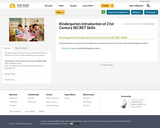
This guide will give you ideas on how to effectively introduce and teach 21st century skills with Kindergarten students.
- Subject:
- Education
- Material Type:
- Activity/Lab
- Lesson
- Teaching/Learning Strategy
- Unit of Study
- Date Added:
- 09/10/2018

This guide will give you ideas on how to effectively introduce and teach 21st century skills with Kindergarten students.

This is a learning styles quiz for our youngest students.
This can also be used with older students that need a modified version of other learning profiles for learning styles. It is heavily picture based.

Featured are lessons and activities designed to be done with guidance from a parent or teacher. Have your child engage in the activities below, and watch as they develop the fundamental skills necessary for elementary-level math.

This curriculum overview provides teacher guidance in the use of the Georgia Dept. of Education Kindergarten Mathematics Units.
It contains information on classroom expectations, use of Number Talks, journals, 3-Act Tasks, and more.

Unit 1- Counting with Friends
OVERVIEW
In this unit, students will start kindergarten thinking of counting as a string of words, but then make a gradual transition to using counting as a tool for describing their world. They must construct the idea of counting using manipulatives and other resources to see the numbers visually (dot cards, tens frames). To count successfully, students must remember the rote counting sequence, assign one counting number to each object counted, and at the same time have a strategy for keeping track of what has already been
counted and what still needs to be counted. Only the counting sequence is a rote procedure. The meaning students attach to
counting is the key conceptual idea on which all other number concepts are developed. Students will develop successful and meaningful counting strategies as they practice counting and as they listen to and watch others count.

Comparing Numbers
Work with numbers 11-19 to gain foundations for place value.
For numbers 11 to19, Kindergarten students choose, combine, and apply strategies for answering
quantitative questions. This includes composing and decomposing numbers from 11 to 19 into ten ones and some further ones by writing and representing the numbers, counting and producing sets of given sizes, counting the number of objects in combined sets, or counting the number of objects that remain in a set after some are taken away. Objects, pictures, actions, and explanations are used to solve problems and represent thinking. Although CCGPS states, “Kindergarten students
should see addition and subtraction equations, and student writing of equations in kindergarten
is encouraged, but it is not required.” Please note: it is not until First Grade that “Understand the
meaning of the equal sign” is an expectation.
Mathematically proficient students might rely on using concrete objects or pictures to help conceptualize and solve a problem. While using objects to make sense of the quantities and relationships in problem situations, students thereby connect whether the answer makes sense through
comparisons and discussions. Using the mathematical language to verbalize their reasoning is an
important cognitive facet for establishing a strong place value foundation. The terms students should continue to use as they verbalize thinking are: join, add, separate, subtract, same amount as, equal, less, more, tens, and ones.

Students will learn about Ezra Jack Keats using a variety of resources in the media center.

Kindergarten children are usually familiar with beginning sound "ABC" books with texts such as "A is for apple. "In this activity, repeated for each consonant letter, art, writing, conventional spelling, and reading are combined to create a personal "Letter Book" for each child.
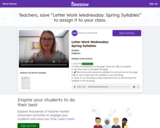
Working on syllables in a word practice.
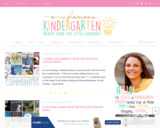
Themed book ideas for lower primary grades.

The andut website provides up-to-date resources and guidance on foreign language learning in grades PreKĐ8, with the intention that such information will help provide a strong foundation for long-term language instruction. The website offers multiple links to other resources, such as a searchable database for early language learning schools and teaching resources. A listserv is available as well via the website.

Orange Shirt Day activities for K-Grade 3This activity pack is ready to use in any primary classroom and ideal to use with children from Grade 1 up to Grade 3 to support important conversations around Orange Shirt Day. It includes a PowerPoint, fact files, art activities and more!
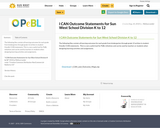
The following files contain all learning outcomes for each grade from kindergarten through grade 12 written in student-friendly I CAN statements, as well as outcomes.
This is a very useful tool for PeBL initiatives and can be used by teachers or students when designing learning activities and assignments.
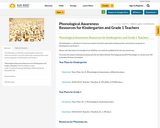
The following is a collection of phonological awareness resources teachers may find useful when setting up their early literacy programs in Kindergarten and Grade 1.
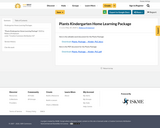
Kindergarten Home Learning Packages

This free, online article, developed for elementary teachers, describes a Kindergarten polar science, standards aligned, unit centered on The Polar Express developing literacy, math, and science skills.

ROVER (Recommended Online Video Education Resources) is a video streaming service for Saskatchewan teachers and students in the PreK-12 education system. It is managed and maintained by the Saskatchewan Ministry of Education. ROVER is a video-on-demand service that provides teachers and students with the convenience of immediate access to streamed, educational videos that support curricula. ROVER videos are housed on a server located in a school or school division network so there are no bandwidth issues, resulting in better picture quality and continuous play of videos without pauses. The videos are intended for viewing on the streaming site and not for copying or downloading.
There are approximately 1,500 videos in ROVER’s combined English and French collections that can be accessed by teachers and students to enhance learning in the classroom.
If you are unable to access the site, it may be because a Saskatchewan Ministry of Education Blackboard login is required. All students have an Edonline account, so contact your child's school or the Ministry of Education’s Support Desk at 1-866-933-8333 or email at stans@gov.sk.ca for login information. Your child's student number will be required.

"The Responsive Teaching, Practice & Assessment in Early Learning Programs document has been created in response to a need expressed by educators for supporting and responding to the varying needs of children in early learning programs. This document is intended to:
• unify a variety of early learning documents available in Saskatchewan;
• provide a process to identify and respond to the diverse needs of children ages 3-6 in early learning programs;
• enhance assessment literacy of educators and how assessment evidence can be used to inform practices and programming;
• identify responsive supports and examples of targeted and/or small group supports;
• help educators create an inventory of community-based supports and services for children and heir families; and,
• provide support and clarification for administrators with respect to indicators of quality and how to support educators." (p.2)
From the Government of Saskatchewan at saskatchewan.ca
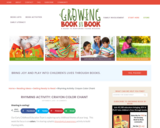
This playful phonological awareness activity to build rhyming skills using colors. Lots of fun for preschoolers and early readers!

If you’re looking for a way to teach your student/child to recognize rhyming words, try these free printable clip cards!